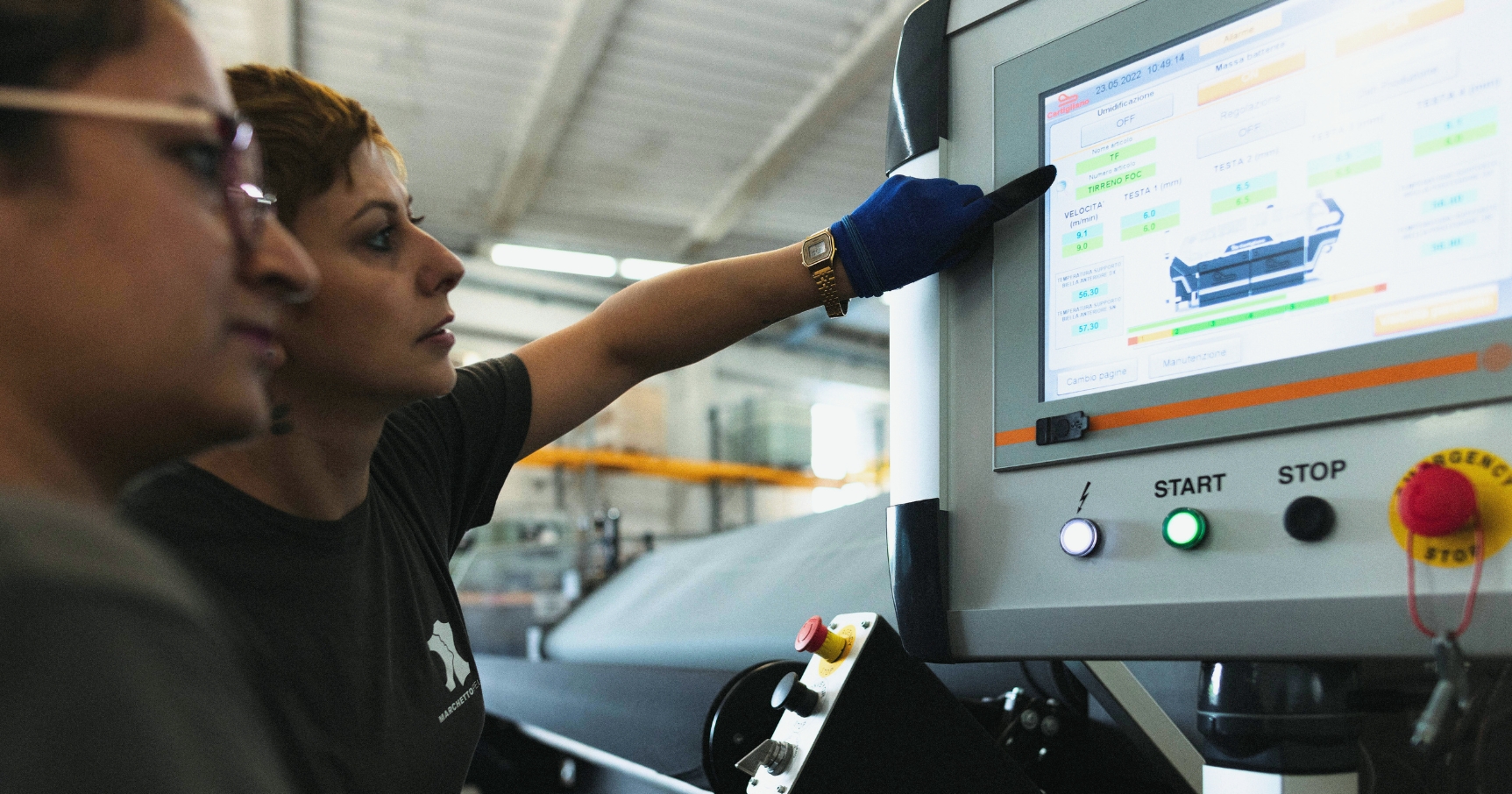In Marchetto Pellami, optimal data management and machines are interconnected
Marchetto Pellami invests in 4.0 technologies to continuously enhance the efficiency of its productions. The work of the operators is made smoother by interconnected machines and automatic control systems, allowing for instant information sharing and optimal data management.
For instance, the company has equipped itself with a technologically advanced leather drying and staking line. The staking machine softens the leather at all its points through the mechanical action of pistons, and an integrated touch screen allows for setting the ideal parameters for each hide. The machine constantly monitors its operating status and maintenance needs, instantly notifying any anomalies.
The new forklifts are also equipped with 4.0 technology, featuring RFID – Radio-Frequency Identification – badges that only allow authorized operators to access the vehicle. These forklifts contribute to optimizing material handling operations, improving traceability and precision in monitoring loading and unloading processes. Each operation is interconnected with the tannery’s computer system, enabling remote data exchange. The man-machine interface is simple and intuitive to facilitate the operator’s work and report malfunctions. The forklifts are equipped with telediagnosis and remote maintenance systems. An especially important safety aspect is the Curve Speed Control, which reduces speed based on the steering angle.
On the environmental side as well, 4.0 technology comes to the aid, and Marchetto Pellami, which has its own purification plant in Vestenanova, has acquired a state-of-the-art dehydrator to reduce the volume of tannery purification sludge.
Furthermore, the company has implemented a cogeneration system powered by non-chemically modified vegetable oil, traced and sustainable, with a power of 940 kWh, which provides all the electricity and heat needed for the production plant at the Vestenanova site.
These innovations guarantee a reduction in environmental impact, facilitate interconnections and fluidity in operations, and improve safety for the operators.
